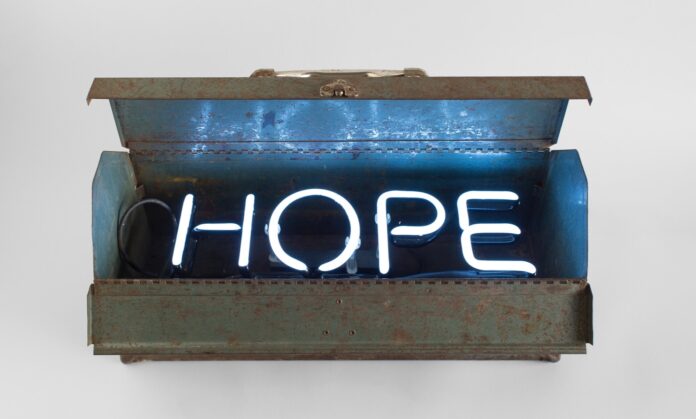What art might be made at the dump? Vases made from ethernet cables. Knoll chairs from aluminum pipes and duct tape. Quilts from awnings and IKEA bags. Moving boxes from scrap paper and office supplies.
Reclaimed: The Art of Recology (through October 17 at Bedford Gallery) presents the work of artists who participated in the artist-in-residence program at the Recology San Francisco Recycling and Transfer Station, otherwise known as “the dump.” Founded in 1990 by artist Jo Hanson, the residency supports artists to create new work using materials from the site’s waste management facilities. Or, more simply put: making art from trash. The works on view indeed demonstrate the infinite possibilities that come from a creative consideration of what was once thrown away. The exhibition is wide-ranging in form and concept, which can feel disjointed at first. From a distance, it may not be apparent that the works on view all incorporate discarded materials. With time, however, the threads weaving these artists and artworks together start to reveal themselves.
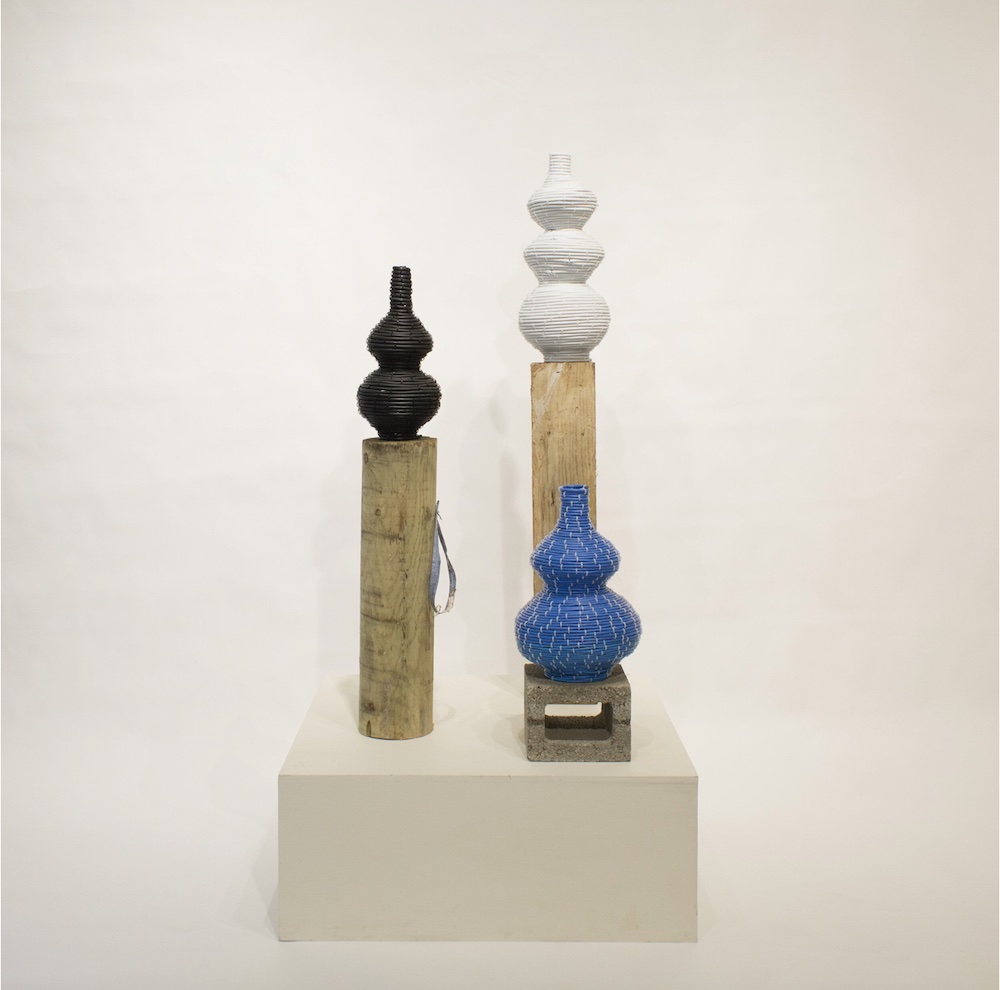
The exhibition proposes unconventional uses for familiar materials and objects. Artworks throughout present immediately recognizable and ordinary objects that are in fact complex facsimiles. Weston Teruya creates paper sculptures of moving and bankers boxes in The space left behind, constructed from recycled office supplies and discarded documents. Cathy Lu’s Cable Vase series mimics pottery through a trio of vases made of coiled ethernet cables and zip ties. Mansur Nurullah’s Cherish recalls a well-worn quilt, made instead of discarded textiles like the aforementioned awning and IKEA bags, as well as a firefighter’s uniform and welding curtain. In Thank You Bag, Lauren DiCiccio constructs a plastic grocery bag from scraps of white organza and cotton with the iconic bag’s repeated text in blue hand-embroidery, with hanging threads underscoring its qualities of assemblage.
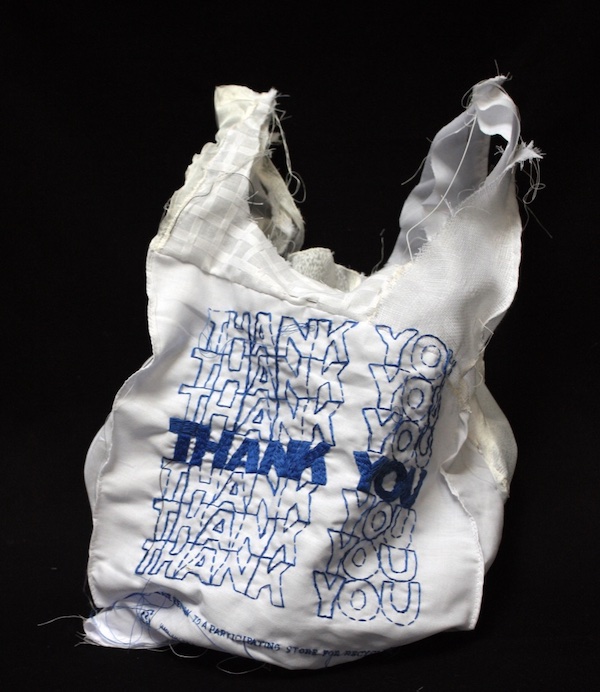
Weaving holds a strong presence in the exhibition, a nod to the long history of fiber arts in Northern California, in ways that expand the craft. Ricki Dwyer’s Pink and Green, a synthesis of two fabrics woven together at the center like an “x,” was created using a loom donated to Recology, which the artist assembled while in residence. Michael Arcega’s sharply-titled Shimmerysunset or Ibeweave (Nacireman aesthetic object) transforms secondhand, fast-fashion belts and IKEA shelving into a rippling sculpture that echoes woven cloth. Miguel Arzabe’s work reassembles local visual culture in San Francisco art scene circa 1973, by weaving bright strips of silkscreen posters into geometric, abstracted forms.
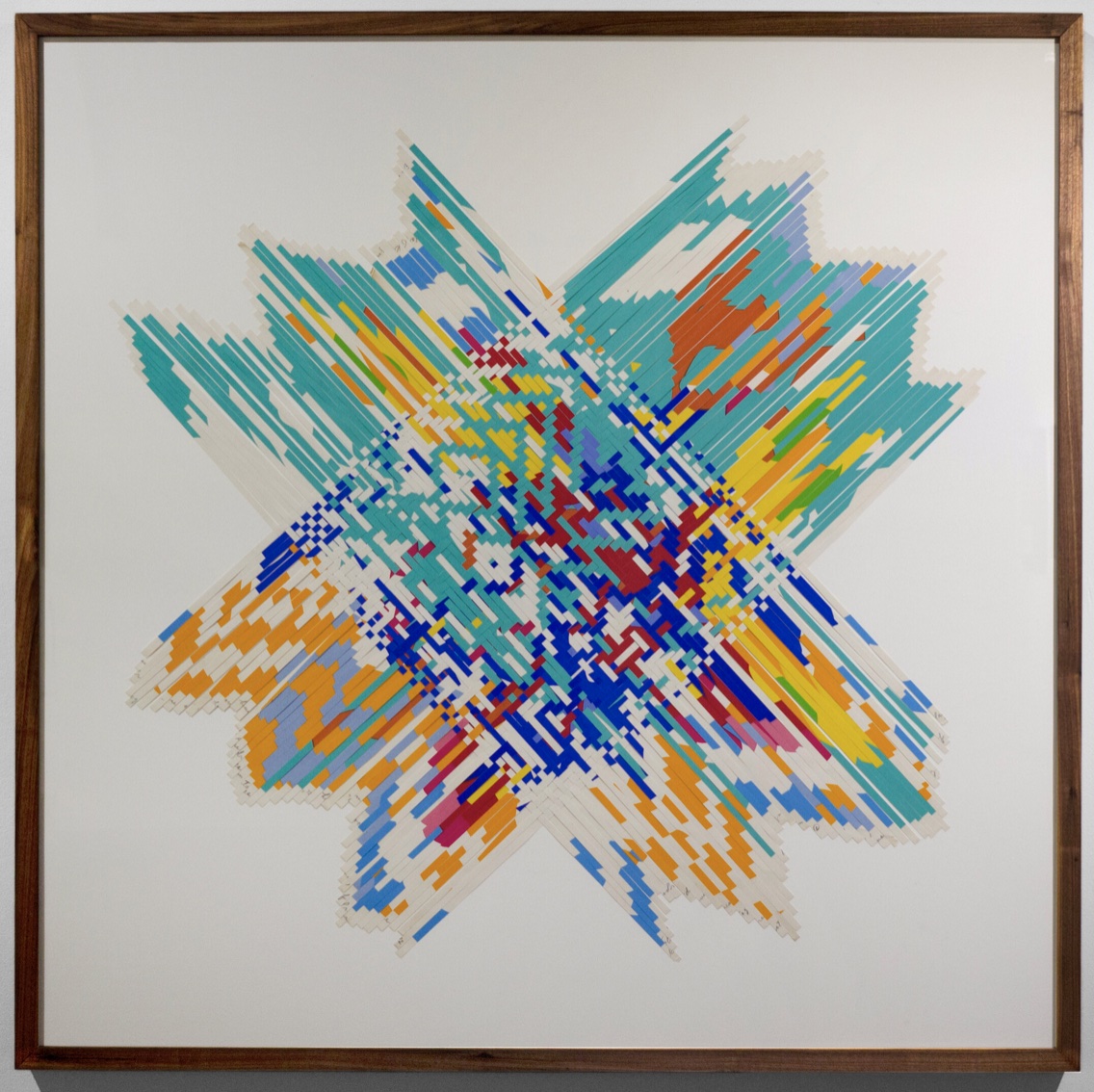
Technology, an omnipotent force in the Bay Area’s history and present, is explored in both concept and material. An excerpt of Genevieve Quick’s Remote Speaker installation imagines a futurist landscape with repurposed outdated tech objects, like CRT television monitors. The installation’s sound component—a looping, computerized voice—reverberates throughout the gallery space, engendering contemporary anxieties of ceaseless surveillance. Artist and writer Jenny O’Dell taps into legacies of archaic tech objects, planned obsolescence, and the excesses of electronic waste. Undead Technology is a series of 30 animated gifs that show the artist’s hands using, and thus re-animating various vintage electronics like a rotary phone, floppy disks, and early Nintendo console.
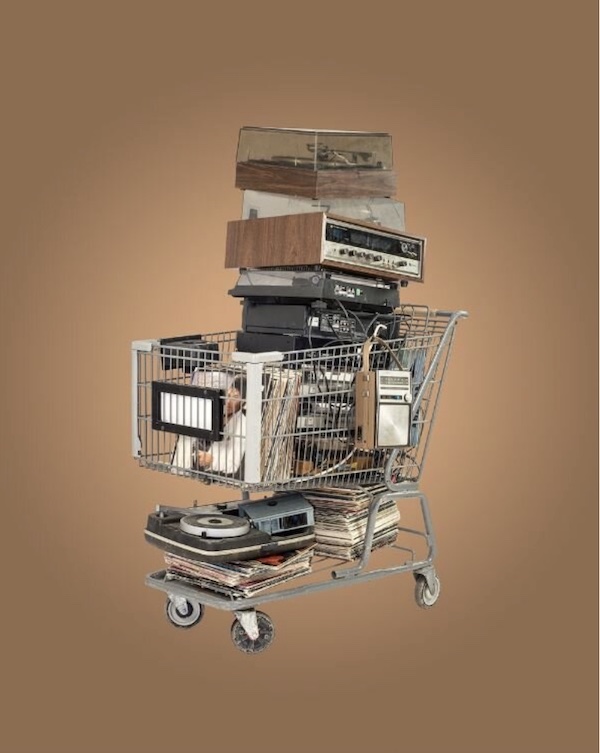
A residency at the dump inevitably provokes a visual study of physical objects, with several exhibiting artists who work at the intersections of photography and sculpture. In their work, photography exceeds the purpose of documentation towards that of reimagination. Kari Orvik constructed a 16×20 camera from collected detritus, which was used to photograph a found still-life of discarded mattresses in Here 2. The physicality of film is made visible in Yulia Pinkusevich’s Experts Prefer This Stop: a strip of 16mm film is placed in a wooden shadowbox in undulating teardrops, with still frames of film countdown leader visible in its rounded forms. Jamil Hellu’s Records, one of a series of four, depicts a shopping cart filled with vinyl record albums and vintage record players assembled against a tan seamless backdrop: a sculpture constructed for the camera.
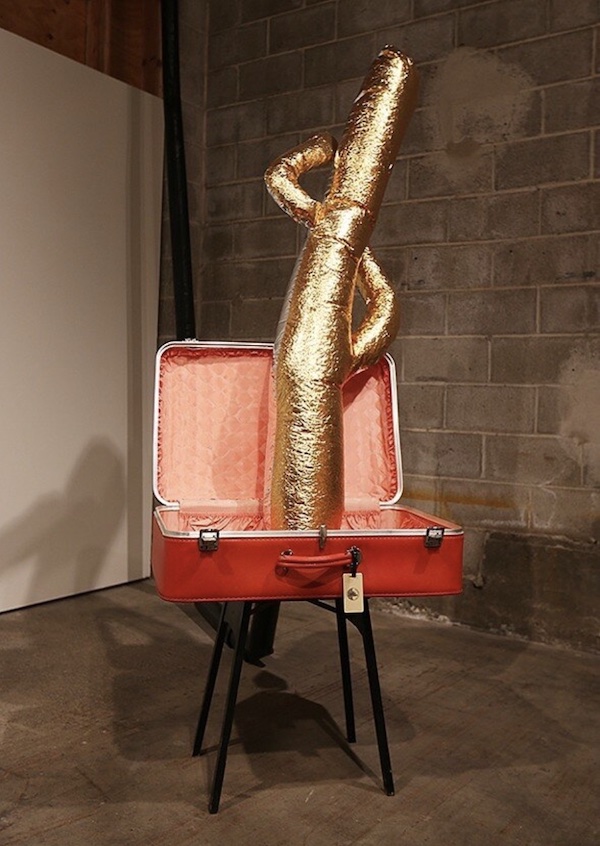
Walking through the gallery feels like a survey of Bay Area artists over the last two decades, tied together through the parameters of both the residency and a shared regional identity. Reclaimed feels like seeing familiar faces at an art gathering before the pandemic. Interconnectedness is central to Terry Berlier’s Perfect Lovers (for Ceil and Sally), a duo of wood and glass objects that resemble elongated wine decanters. One is constructed entirely of smoothly-layered wood and the other of glass filled with sawdust. The mirroring in this work and its title recall Felix Gonzales-Torres’ iconic artwork, both an exploration of human connection. With artists long isolated from our creative communities in the last eighteen months, exhibiting artists and gallery visitors can instead commune together through objects imbued with humanity.
“Reclaimed: The Art of Recology” runs through October 17 at Bedford Gallery, Walnut Creek. More info here.
Help us save local journalism!
Every tax-deductible donation helps us grow to cover the issues that mean the most to our community. Become a 48 Hills Hero and support the only daily progressive news source in the Bay Area.


